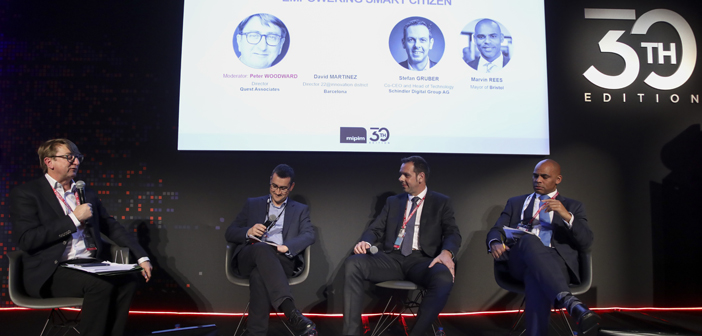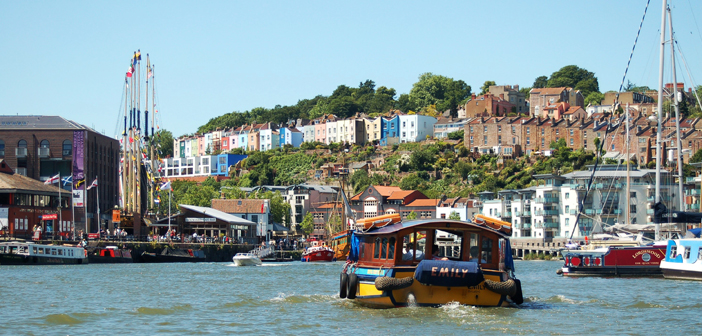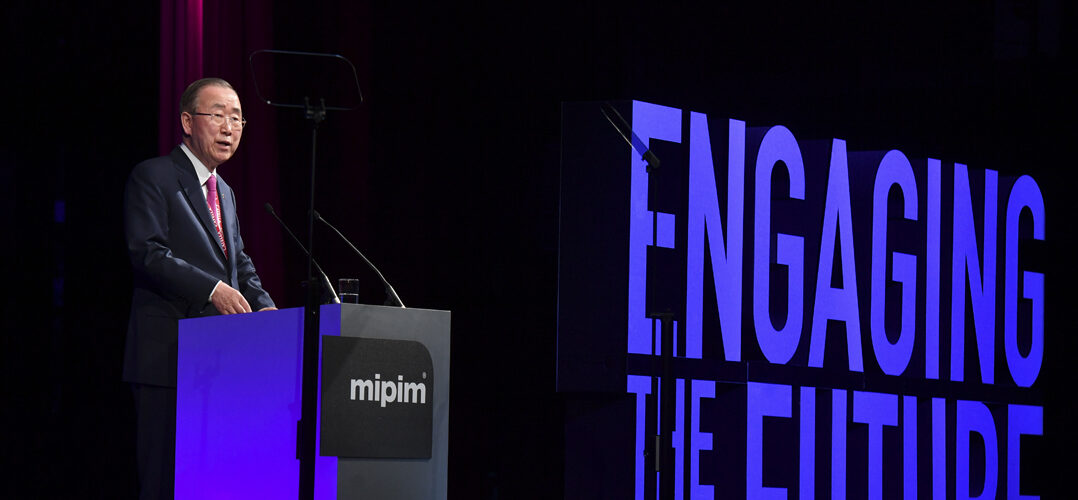Urban authorities and the real estate industry received a wake-up call when Amazon pulled out of plans earlier this year to open a HQ2 in New York’s Queens district.
The back-track followed a backlash from “lawmakers, progressive activists and union leaders”, reported The New York Times. This followed HQ2 stirring a debate about the “use of public subsidies to entice wealthy companies, the rising cost of living in gentrifying neighbourhoods, and the city’s very identity.”
Will this put a damper on New York City’s No 1 position in Savills’ Tech Cities Index? Probably not.
But as Ban Ki-moon, the UN’s 8th Secretary-General, emphasised during has keynote address at MIPIM 2019 (above) “everybody needs to be onboard” during these times when globalisation has led to “some imbalances and a lot of inequality”.
“Future cities must be underpinned by inclusivity for all” – Ban Ki-moon, the UN’s 8th Secretary-General
Ban Ki-moon continued: “It is not enough for cities to be ‘smart’ if they only cater to affluent professionals, or young people, or those who are able-bodied. Future cities must be underpinned by inclusivity for all.”
The 8th UN Secretary-General’s message was endorsed by all three of the panel members of the MIPIM conference session Smart Cities: Empowering Smart Citizens, moderated by Peter Woodward of Quest Associates.
Smart cities are not just about tech
Being a smart city is more than about becoming more efficient and effective through
the creation of an ecosystem of digital doodads that collect data filtered by artificial intelligence.
“If you don’t get a diversity of thought and background around the table … this will come back to bite you” – Marvin Rees, Mayor of Bristol City Council
Marvin Rees, the Mayor of Bristol City Council in the UK, warned at the MIPIM session: “If you don’t get a diversity of thought and background around the table, you won’t know which questions are coming, and if you answer the question wrongly, this will come back to bite you.”
A smart city lies between the physical space and the social and political structure – David Martínez Garcia, @22 Committee

For fellow MIPIM panellist David Martínez Garcia, Project Director of the @22 Committee at BIT Habitat (Barcelona City Council), a smart city is about sustainability as well as inclusivity; and it lies as a layer between the physical space, the urbs, as the Romans called it, and the social and political structure, the civitas.
“We can optimise resources with new technology, but it’s even more important to improve the quality of life for citizens” – Stephan Gruber, Schindler Digital Group
Stephan Gruber, Head of Technology at Schindler Digital Group, continued the discussion, saying: “We can optimise resources with new technology, but it’s even more important to improve the quality of life for citizens.”
Cities smart enough to improve well being
Cities have always been in the forefront of technological change, ever since they first emerged in the Near East around seven thousand years ago.
Nowadays, being ‘smart’ is also about growing and attracting talent through a network of universities and research centres. This then makes the city attractive to tech companies and start-ups – now major space occupiers in their own right – who in turn attract venture capital investment, the life-blood of the early-days tech industry.
Bristol is Open is a joint venture between the University of Bristol and Bristol City Council. Their role is not just about attracting tech talent and making the city ‘smart’: “Faced by numerous constraints, including land availability, population growth, and limited resources … Cities must look for ways to improve their citizens’ and visitors’ standard of living. Smart cities are a way to overcome these barriers and make improvements.”
The ‘tale of two cities’ is not only about cities competing with each other, but also differences within urban areas. In Bristol, for example, despite its accolade for being the UK’s smartest city, a quarter of children live in poverty.
Smart cities should not just be for the PhDs and lovers of interesting new gizmos, said Rees at MIPIM. They should be for all. Once again there were echoes of Ban Ki-moon’s keynote address.
How Bristol is creating its story
To empower its citizens, and to create a vision for 2050, Bristol has created a story along six strands: Connectivity, Economy, Environment, Health & Well-Being, Homes & Community and Learning & Skills.
It’s about telling the story of interdependence between the different strands over time, said Rees. “If you provide good-quality, affordable housing for families today, what does that look like in terms of the education of the workforce in 20 years’ time?” he asked the audience.

Bristol – ©Destination Bristol
@22 Innovation District in Barcelona – shaped by all stakeholders
Barcelona launched the @22 innovation district on 200 hectares in Poble Nou in 2000 with the idea of preserving the productive character of a district once known as the Manchester of Catalonia.
Ten years after launching, and with half of the site still open for development, @22 is currently undergoing a second phase. As Martínez said that it was about considering: “What are the new challenges? What are the new things to incorporate?”
Around 1,000 people are taking part in a ‘coproduction’ working group. The group is made up of members of the public sector, local community groups, citizens, and members of 22@Network BCN, a private business association representing around 150 companies, universities, research centres and start-ups.
Members of the group meet for round tables, with no more than 10-15 people, where issues are discussed freely, and then, if they share a vision, “that vision [becomes]an engine of further discussion, and any issues are put on the @22 digital platform, Let’s Decide”, said Martínez.
“The digital platform is not a substitute for face-to-face dialogue. It is one more tool – David Martínez Garcia, @22 Committee
Let’s Decide allows people to download information, follow discussions and to vote. “The digital platform is not a substitute for face-to-face dialogue,” said Martinez. “It is one more tool. It facilitates human interaction. We also have neighbourhood councils, district committees and the city council.”
Martinez adds: “It is an experimental way of showing how talking with stakeholders, citizens and all the actors [in a project]can be very successful.”



